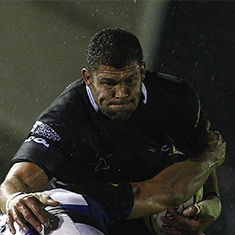Clinical Massage Therapy
Massage at Activate
Massage therapy, also referred to as deep tissue massage or sports massage, is a form of hands on treatment that involves the manipulation of soft tissue structures (e.g. muscle, tendon, fascia) for the immediate improvement of muscle pain and spasm.
You certainly don’t need to be a sports person to benefit from a sports massage. It is aimed to relieve muscle pain and tightness caused by the stress of training or even everyday life.
Our therapists are extremely experienced with a wide range of hands-on techniques and our massage therapy appointments may include a variety of additional treatments if deemed necessary, including Instrument Assisted Soft Tissue Mobilisation (IASTM), percussive massage gun and suction cupping.
The benefits
Who Will Benefit From Clinical Massage?
Dealing effectively with a variety of musculoskeletal problems, massage can be used to help in recovery, reducing symptoms in many ailments, and are used significantly as preventative treatment.
For athletes, pre and post event massage treatments and regular maintenance enhance sporting performance and expedite recovery, which is essential in keeping competitive and at the peak of performance.
Far from just being available to elite athletes, our services are applicable and ideal for anybody wishing to guard against or recover from soft tissue aches, pain or injury, which are encountered in modern day-to-day living and work environments.
Treatments
Here at Activate, the massage services we offer are:
Orthopaedic Massage
Deep Remedial Massage
Myofascial Release
Clinical Sports Massage
Clinical Sports Massage Therapy
Clinical Sports Massage Therapy – Is the management, manipulation and rehabilitation of soft tissues of the body including muscles, ligaments and tendons.
Massage, applied skillfully, is the most effective therapy for releasing muscle tension and restoring balance to the musculo-skeletal system. Received regularly this helps our clients prevent injuries, which might otherwise be caused by overuse. A constant build up of tension in the muscles from regular activity may lead to stresses on joints, ligaments, tendons, as well as the muscles themselves. These muscle imbalances may develop and often go undiagnosed until they are serious enough to cause discomfort or impede performance. Our skilled massage therapists will be able to detect variations in the soft tissues and by using the correct techniques, help you maintain a much healthier physical state.Therefore, one of the greatest benefits of sports massage is in helping prevent injury.
Orthopeadic Massage
Clinical Orthopaedic Massage Therapy – is an advanced, highly skilled method of treatment and relieves specific complaints of pain and dysfunction. It brings about a healthy balanced function to muscles and joints.
Clinical massage therapy works primarily on the muscles, joints and other related soft tissues, and can successfully treat most minor musculoskeletal problems. It treats the individual with the understanding that everything within the physical body is both connected and relaxed. Clinical massage treatment is safe, non-invasive and highly versatile.
Clinical Orthopaedic massage therapy is a massage combining a variety of techniques working efficiently with the body to eliminate pain and re-establish healthy movement and balance. By using body reading and orthopaedic assessments the source of the problem can be identified aiding a quicker long-term recovery. Techniques such as deep tissue, soft tissue release, myofascial release and trigger point therapy are used to treat injuries eliminating pain.
Deep Remedial Massage
As the name suggests this is a technique that works deeper into the body’s muscle tissue to encourage the release of trigger points, muscle tension and adhesions thus helping to realign the fibres. It is about sinking deeper into the layers and fibres of the individual muscles using a slow, listening and respectful pressure working with the body not against it.
This technique can be really effective in rehabilitation from chronic pain conditions and where there is contracted areas such as stiff neck and shoulders, low back pain and leg tightness. In these conditions there are usually bands of painful rigid tissue
in the muscles, tendons and ligaments known as adhesions. Adhesions in the tissue can block circulation causing pain, inflammation and reduced movement. The technique works by physically breaking down the adhesions allowing blood flow and nutrients to reach the area.
Deep tissue work is also a great tool in injury rehabilitation and where there is limited mobility, postural problems, repetitive strain injury, muscle tension or spasm and even Fibromyalgia.
Whilst great care and a listening touch is always applied when using deep tissue techniques there are likely to be times where discomfort and pain are felt by the client and often there is some stiffness after deep tissue work. This should always ease after 24 – 48 hours.
Myofascial Release
Fascia is the main connective tissue in the body. It surrounds every cell, muscle, bone, nerve, blood vessel in the body, creating a three-dimensional web which spreads all through the body. In its normal state fascia is fluid and pliable, allowing full, pain-free movement.
However, fascia is vulnerable to trauma from accident, immobility, injury, surgery or repetitive movement. Such trauma causes fascia to tighten, solidify and develop restrictions. Over time these myofascial restrictions can lead to poor posture, altered structural alignment, compromised blood supply and pain. These restrictions do not show up on standard tests such as x-rays or MRI scans, which means they are rarely diagnosed as the cause of chronic pain conditions.
Myofascial release is a non-invasive, hands-on soft tissue technique that works on the fascia to release restrictions. The technique involves applying a stretch to the restricted fascia until resistance is felt. As these releases occur the therapist can
follow the trail of further restrictions until the tissue becomes softer and more pliable. These releases take the pressure off pain sensitive structures such as nerves and blood vessels, and restore alignment and mobility to muscles and joints. Scientifically, myofascial release has been shown to work at cellular level. Clinical trials have demonstrated the effectiveness of myofascial release in alleviating many conditions from plantar pain to increasing a range of shoulder movements.






